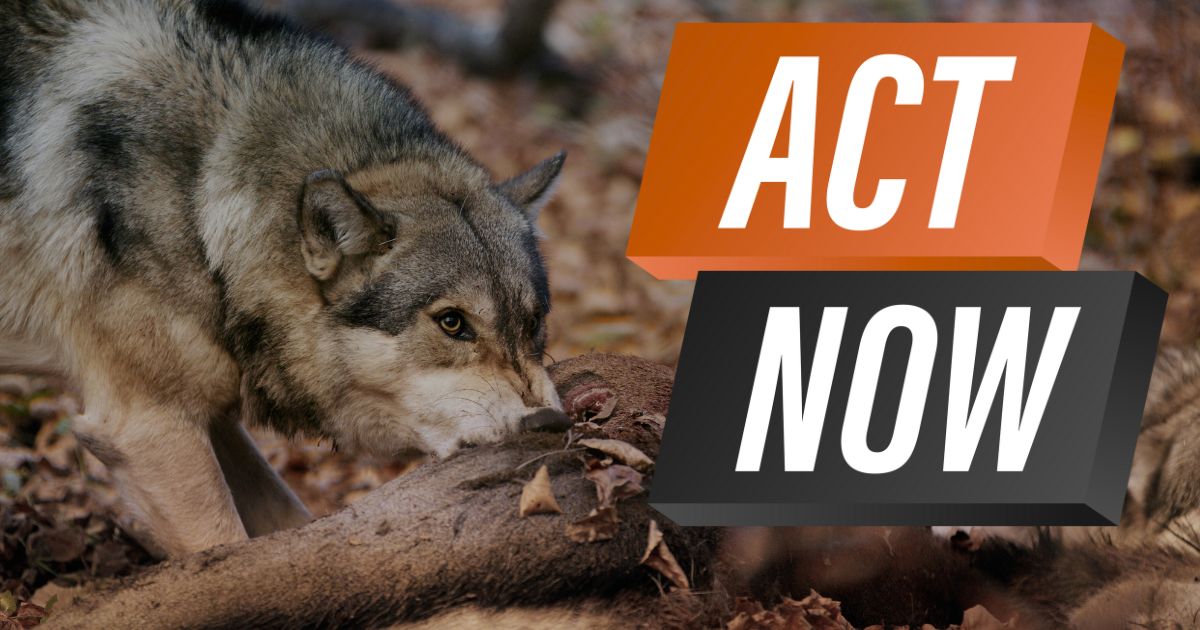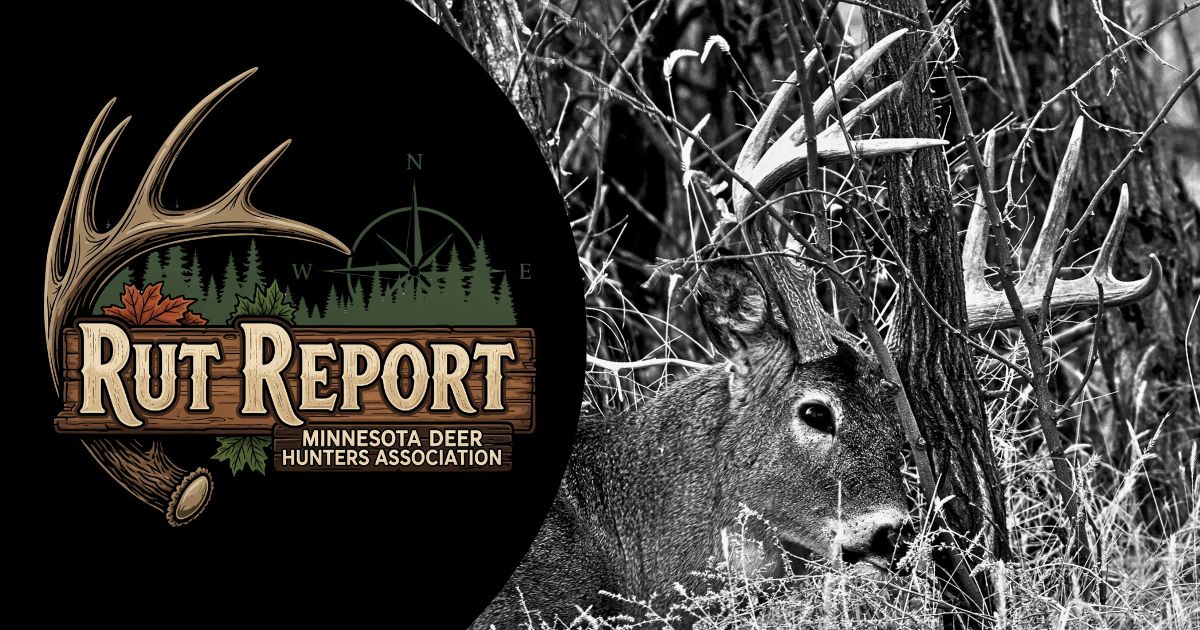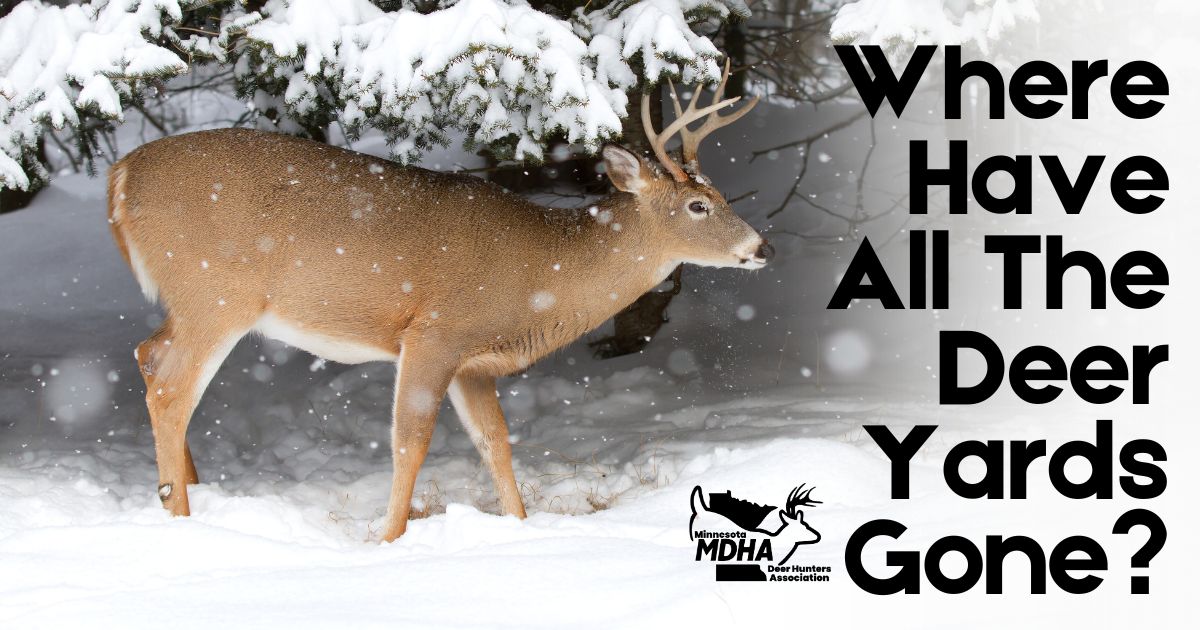
- Tom Rusch
- From Whitetales
- Hits: 3353
Where have all the Deer Yards Gone?
- Tom Rusch
- From Whitetales
- Hits: 3353
I saw the big fella cruising on a crisp November day. He was covering ground in a great hurry grunting with every step. Then, six does and fawns came flying out of that gnarly bedding area on a knob adjacent to a fresh aspen cutover and beaver pond, not wanting anything to do with the randy fella.
I grabbed the grunt call off the hook and challenged his manhood with my own deep, guttural grunt. I’ll never forget that image when the ten-point jammed on the brakes and bellowed the loudest grunt I’ve ever heard.
He then took a few stiff-legged steps into a small window in the timber and gave me my chance. He has adorned a wall in our home ever since. To background, I knew there was a big one in that area as he left big rubs for three years around that stand. I was not surprised, but fortunate, to finally meet up with him there.
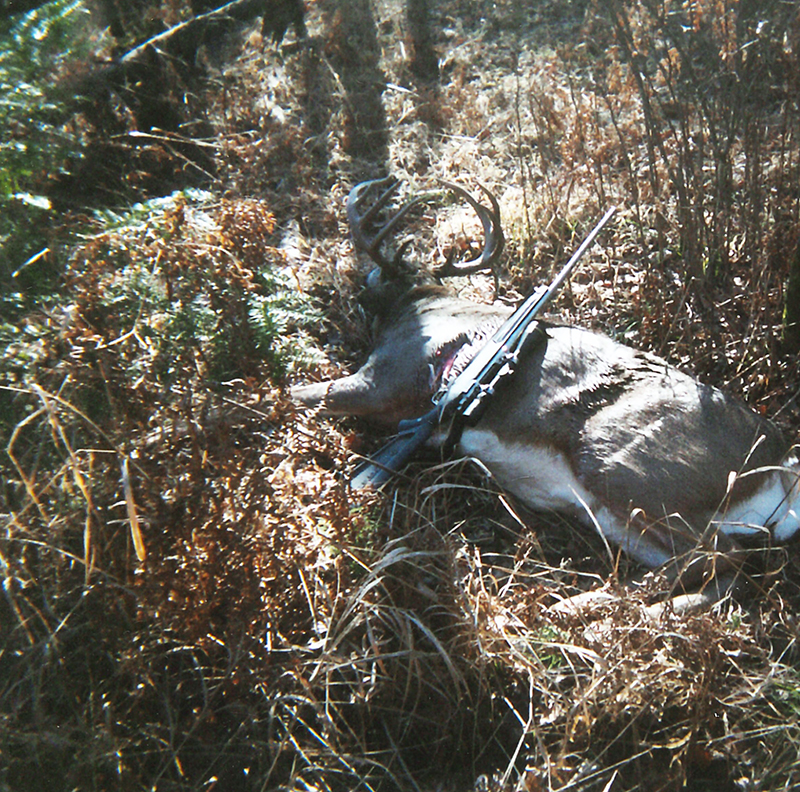
That public land was very good to me, but, as often happens, it all ended when the old jack pine and balsam fir got logged off along with the rest of the mature timber in the area a few years later. It was a deer magnet. Deer always used this area, year in and year out.
I love natural jack pine stands. They are some of the best deer habitat in northern Minnesota. They use it every season of the year. There is only one problem…it has almost disappeared from the landscape.
Why? Why do deer gravitate to natural stands of jack pine?
Jack pine regenerates naturally after wild fire and prescribed burnings. It comes back as thick as hair on a dog. Turns out Mother Nature knows how to regenerate both timber and wildlife on the same ground. The result is a diverse Northern (boreal) Forest that attracts a diverse menagerie of wildlife. These stands provide high quality food and cover at a fairly young age and can do so on shallow Canadian Shield soils for up to 100 years.
Unfortunately, because jack pine generates less revenue than red pine (Norway pine) it has been systematically converted to red pine plantations following harvests over the last 40 years. Red pine plantations provide poor food and marginal winter cover for deer and deer use drops off significantly, especially come fall and winter when deer seek the best cover to protect them from the elements. Over time, fire suppression and conversion of jack pine to red pine have eliminated thousands of acres of winter cover in northern Minnesota from Red Lake to Grand Marais and Detroit Lakes to Cloquet.
What’s the problem with red pine?
A red pine plantation is initially established with a heavy dose of herbicide sprayed to set back “competition” and then trees are planted to maximize tree growth (800/acre) and minimize other competing trees, shrubs, and plants that deer call “food.”
Lacking food and cover, red pine plantations do not provide high quality winter cover. Red pine also does not trap snow in the canopy very well which further decreases use in deep snow winters. No food. Poor cover. Poor mobility. These make plantations death traps when the wolves come through looking for a venison supper. For big game species across North America, habitat alteration and loss are often a proven formula for population decline.
Similarly, intensive forest management has changed the winter landscape in other subtler ways. Northern Forest whitetails require a balance of food sources and high quality (winter) cover available over time. Aspen, which covers 75% of public land in many northern counties, has been intensively harvested since the mid-1980s. Older age aspen stands (>50 years) provide excellent winter deer habitat as the canopy begins to break up allowing balsam fir, spruce, cedar, and white pine to become established and provide cover and trap snow, making these stands highly preferred by deer when the snow piles up.
Conversely, young stands of saplings and pole timber provide poor winter cover and trap little snow and are almost impossible for deer to navigate when the snow pack exceeds 24”-30.” They have to lunge to get through it. When the last of the older aspen, balsam, and jack pine is cut, the deer herd no longer has high quality winter cover options. Consequently, they are much more vulnerable to winter, starvation, and wolf predation; therefore, the herd goes into decline. The state-wide deer harvest reflects this reality.
This scenario is playing out now in your hunting area and around your deer stands if you hunt in northern Minnesota. Less than 10% of the older forest is left standing. And, the new “rotation age,” when younger stands are harvested, is now 35-40 years. Under this forest management regime, older forests will not exist on the landscape in most hunting areas. This is not a wolf issue. It is a forest management issue resulting in marginal winter cover that tips the balance in the wolf’s favor during deep snow winters.
Lake Superior snowbelt
The boreal forest has evolved in the shadow of Lake Superior for eons. Conifer forests grow in moist environments. Our boreal forest is adapted to long, cold, snowy winters. In order to survive, white-tailed deer must also adapt. But, NE Minnesota is also the northern limit to the whitetails’ range due to these same limitations. Moose are far and away better adapted to deep snow, limited browse, and winters that last 5-6 months. In the Arrowhead Region, snow cover arrives during deer season and persists well into May and sometimes June in border country.
Quality winter cover defined
But, isn’t a pine tree a pine tree? Not all conifer trees provide high quality cover. The devil is in the detail. The best conifer “stands” are white cedar, balsam fir, white spruce, and jack pine, which grow on higher, upland ground. All these trees have limitations from a foresters’ perspective. Deer are often their own worst enemy. They browse cedar, jack, and white pine to the point they deform it, stunting the trees’ growth and/or killing it before it can grow out of reach. These conifers also grow more slowly than aspen and other hardwoods and generate less revenue. And, while wildlife managers might love jack pine and balsam fir, often many foresters despise them both for economic reasons.
Back in the day, when the majority of aspen being cut was 65-80 years old in St. Louis County, foresters and wildlife managers agreed 55-60 years was a good rotation age for our short growing season. As older aspen stands started to become scarce (~2010-2015) the rotation age for aspen was changed to 40 years state-wide. No input. No discussion. It just came down from on high like a bolt of lightning.
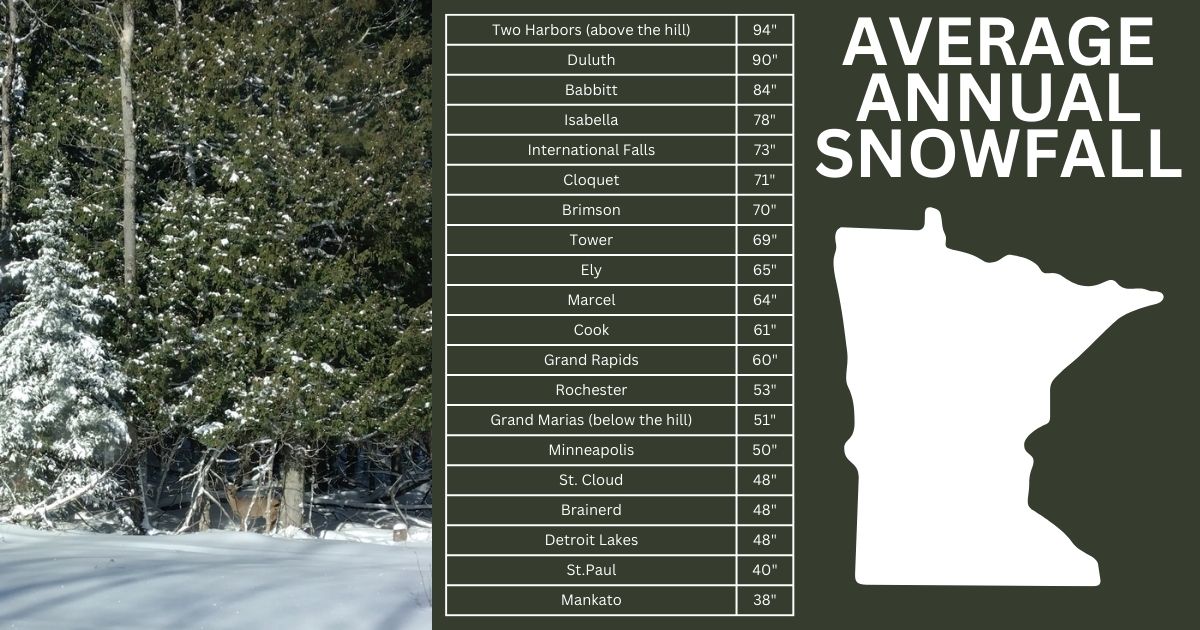
Can we find common ground?
Compromise is the key, but is difficult in today’s political world. Common ground can be found by managing aspen a little differently in wintering areas. Aspen that is allowed to grow to age 55-60 (65+ Wildlife Management Areas) can provide significantly better winter cover. Lost aspen volume is not an issue with wildlife managers as increased conifer diversity is good for most native wildlife species because it provides better habitat in the North. “Extended” aspen rotations still provide good revenue as not all public land managers manage aspen intensively. Additionally, deer and other wildlife provide important revenue, recreation, and quality of life for northern counties. Unfortunately, with the shift in aspen management, we generally have younger forests across the north.
Deer are survivors
White-tailed deer have evolved in many ways to survive severe winters. For instance, they move to conifer-dominated landscapes when snow depth compromises their mobility, generally in December. Northern Minnesota has been blessed with world class deer researchers and their research for over 50 years. Decades long radio telemetry deer studies have shown they are extremely resilient. They have evolved to seasonally migrate from summer/fall home range to winter ranges. Deer learn migration routes and timing from their mothers. Many deer in Ontario-Minnesota border country migrate 5-20 miles to their historic winter ranges. Eight to ten inches of snow is the impetus for migration. When it is “time to move out,” whether it is the legendary “Halloween Storm” of 1991 or the late un-named storm in early February of 2013, deer instinctively know it’s time and migrate through the same routes there and back. Winter cover is critically important to the herds’ survival even though an unknown percentage won’t be coming back. Vast areas are void of deer by early January in severe winters in the Arrowhead.
Traditional deer yards
Long term deer yards throughout the Great Lakes States have many common denominators.
- Large conifer-dominated landscapes offer Northern white cedar, which can survive over 300 years.
- Excellent snow-capture qualities in the canopy results in significant “snow shadow” underneath, which lessens snow depth by a third (20” snow vs 30” in open aspen), making travel easier.
- Longer-lived conifers like cedar, white pine, hemlock.
- Longer cutting rotations or no harvest, i.e. State Parks, WMAs, private land, National Forests, Wilderness Areas.
- Deer management policies.
- Riparian set-back reserves, big islands. Though narrow, riparian corridors facilitate connectivity to other wintering areas.
- Additional contributing factors: longer rotations, planned staggered harvest regimes, selective harvest vs clearcutting, and rolling terrain to increase spatial/topographic diversity.
- A history of deep snow, higher elevation, northern latitude and Lake Superior.
Our climate is changing
Because Lake Superior is the largest freshwater lake in the world, it has a major impact on weather in adjacent states. Satellite measurements of ice coverage show the majority of the big lake is now ice-free most winters. An open Lake Superior contributes moisture to winter storms throughout winter. Our winters are now statistically warmer, yet snowier. Major storms with heavy snowfall are becoming increasingly common. Ten of the top 12 snowiest towns in Minnesota are located in the Lake Superior snowbelt. It is not by coincidence that St. Louis, Lake, and Cook Counties have the lowest deer populations in the North Country. But, in almost 40 years as a deer manager, I have never heard anyone blame Lake Superior for the demise of the Northern Forest deer population.
Interesting Facts:
*Snowfall is the most important factor in winter severity and survival for northern white-tailed deer.
*Quality winter habitat, cold temperatures and wolf predation also significantly contribute to winter deer mortality.
*Vast areas in Cook and Lake Counties along the higher elevations above Lake Superior and in the BWCA exceed snowfall along the shore but there are no official weather stations.
*Average Annual Snowfall “Below the Hill” in Two Harbors is 61”. Above the Hill at the airport it is 94”. An astounding difference of 33” on average even though it is just a couple miles away.
*The record biggest snowfall in 24 hours was 36” in 1994 at Wolf Ridge in Lake County which is one of the highest points of terrain along Lake Superior. Most winters all deer are in the narrow strip of lakeshore between the top of the ridge and Lake Superior where snow depth is significantly lower. Wildlife Biologists observe this pattern each winter while conducting the annual aerial moose survey.
*The deepest snowpack (75”) was measured in 1949-50 at the Pigeon River bridge in Cook County.
*Hurley, WI on the south shore of Lake Superior and Michigan U.P. border averages 174” of snow annually and endured 295” in winter of 1996-97. The south shore of the U.P. also has low deer numbers.
What can hunters do?
- In response to the decline of the Northern Forest deer herd after back to back winters in 2012-2014, which has persisted for over 10 years, MDHA and DNR have partnered in a long-term habitat improvement effort to establish conifer in aspen stands at a young age to mimic natural stands.
- Habitat improvement takes time, commitment, cooperation, hard work and money. But, the results stand the test of time. Quality habitat enables any and all wildlife species to endure and rebound faster form severe winters, drought, flooding, disease and other natural disasters they have evolved with.
- Support sustainable forest management for timber and wildlife.
- Support mixed stands of conifer beneficial for deer versus plantations, which are biological deserts.
- Seek agency cost-share grants for habitat work (MN DNR, Soil & Water Conservation Service, and U.S. Forest Service) for woodland owners.
- Work cooperatively with neighboring landowners to increase the size of winter cover complexes over time. These complexes are beneficial to a myriad of wildlife species, people, recreation, and hunting, as well as the environment.
About the author: Tom Rusch and his wife Deb live in rural Eveleth in St Louis County, MN. He is a recently retired 35-year MN DNR wildlife manager in Northern St Louis County and an avid public land deer, grouse and turkey hunter since the 1970s. Tom enjoys being in the woods and on the water year around. In the woods, he has hunted Northern Forest whitetails with a bow, rifle, and muzzleloader since the mid-1980s.







